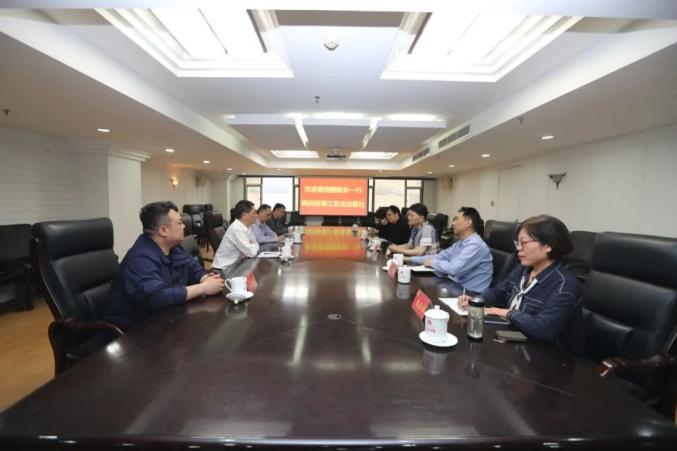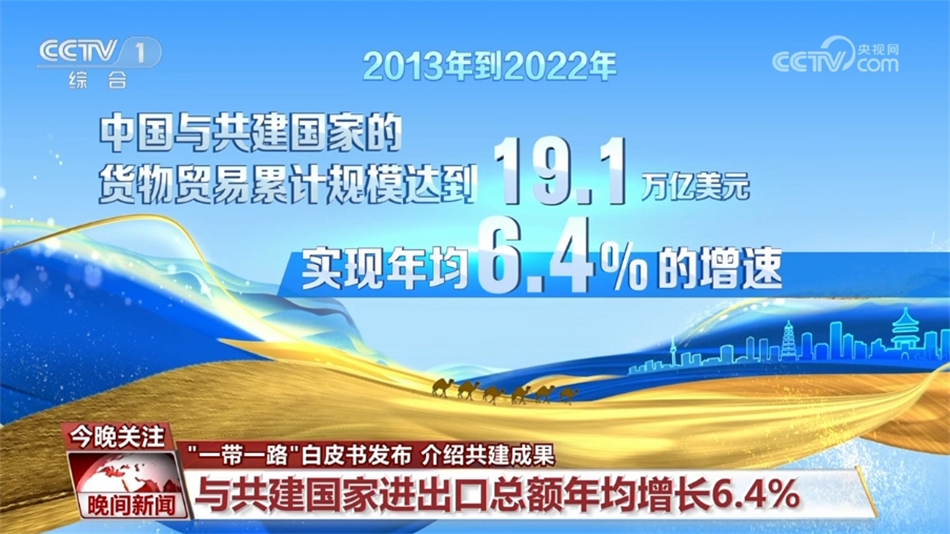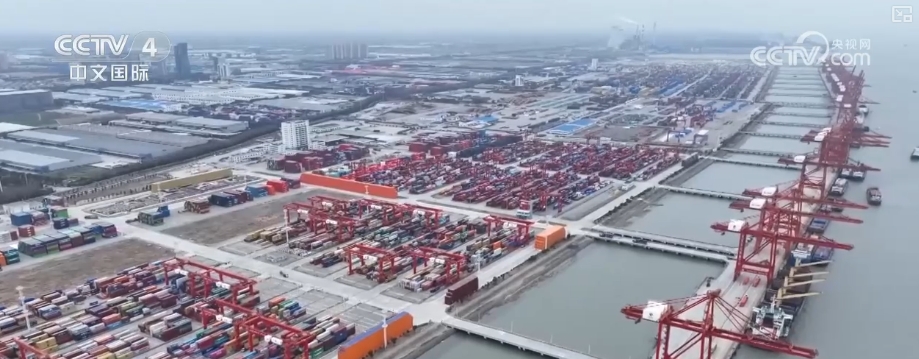Global Roundtable Dialogue: India Is Recalibrating “balanced Diplomacy”?
Global Roundtable Dialogue: India Is Recalibrating “balanced Diplomacy”?
Long Xingchun: Professor Lin Minwang of the School of International Relations of Sichuan Foreign Studies University: Vice Dean and Researcher of Fudan University Huang Yunsong: Vice Dean of the School of International Relations of Sichuan University and Deputy Director of the South Asian Institute of South Asia. Only by "balancing diplomacy" can the implementation of the "Indo-Pacific Policy" be guaranteed.
Long Xingchun: Professor, School of International Relations, Sichuan Foreign Studies University
Lin Minwang: Vice President and Researcher of the Institute of International Studies, Fudan University
Huang Yunsong: Vice Dean of the School of International Relations, Sichuan University, Deputy Director of the South Asian Institute
Only by "balanced diplomacy" can we ensure the implementation of the "Indo-Pacific Policy"
Long Xingchun
After multiple rounds of tariff negotiations, the United States and India still cannot reach a trade agreement, and U.S.-India relations have taken a sharp decline. A series of actions by the United States have caused a huge shock to Indian society and broke India's illusion of "American ally". The Indian strategic community has discussed whether diplomatic turn needs to be taken to meet the challenges brought by the United States.
In the past few years, India has changed its previous "balanced diplomacy" and has shifted significantly to the United States. For example, actively participating in the "Quad-side Security Dialogue" of the United States, Japan, Australia and India has become one of the support points of the United States' "Indo-Pacific Strategy"; it is obviously biased towards Israel on the Gaza issue; India has been invited to attend the G7 summit for many years, etc. From the perspective of the United States, it has also given some feedback to India's "diplomatic tendency". The U.S. Congress passed a bill that grants India "non-NATO allies" treatment in arms sales and military technology transfer. India and the United States also signed a series of military cooperation agreements to hold joint military exercises on the Sino-Indian border.
After the new US government came to power, "MAGA" (make the United States great again) became the core policy orientation of Washington, while India is working hard to achieve "", that is, "MIGA" (make India great again) in the American context, so it is not surprising that the collision between the two sides in the fields of economy, trade and diplomacy. Moreover, Trump's re-election itself is a reflection of the resurgence of "isolationism" in the United States, which is driving major changes in the United States' foreign strategy. Washington pays more attention to economic interests and is not interested in value diplomacy, while strategic contraction leads to a decline in demand for allies. Many Indian scholars believe that Trump’s goal is to return to the United States, rather than to India. The United States does not want India to develop into the "next China", so India and the United States cannot be "natural ally".
It is precisely because of structural contradictions that India has also realized that the current lack of balanced foreign policy has to be pulled back. The outside world has seen that Indian Prime Minister Modi, who has not visited China for seven years, will attend the SCO Leaders' Summit held in Tianjin in early September in the future; Modi and Brazilian President Lula had a phone call on August 7, reaffirming the importance of strengthening BRICS cooperation, defending multilateralism, and emphasizing the importance of actively responding to international economic challenges; New Delhi also quickly announced the invitation to Putin to visit in the near future.
As a country with a tradition of non-aligned diplomacy and frequently emphasizes its identity as a "strategic autonomy" major power to the outside world, if India only follows a certain country, it will damage its pursuit of a major power. India proposed the "east-oriented policy" as early as the mid-1990s, and in 2014 it was upgraded to the "east-oriented action policy" with the goal of strengthening economic cooperation with the prosperous East Asia. At the same time, the scale of economic and trade between East Asian countries such as China, Japan and South Korea and the Gulf and Africa along the Indian Ocean coast has been expanding. Africa and the Gulf have become important sources of energy, raw materials and commodity markets in East Asia. 90% of the trade between East Asia and Africa and Europe needs to pass through the Indian Ocean. Therefore, India has its own "Indo-Pacific policy".
The US government formally proposed the "Indo-Pacific Strategy" at the end of 2017, but its geographical scope is defined as "the West Coast of India to the West Coast of the United States", and does not include the Gulf countries along the Arabian Sea in the northern Indian Ocean and the African region on the West Coast of the Indian Ocean. The US version of the "Indo-Pacific Strategy" only requires India, not the entire Indian Ocean and coastal areas, nor is it used to strengthen economic cooperation with Indian Ocean coastal countries. The fundamental purpose is to win over India to deal with the rising China. This is not consistent with New Delhi's strategic goals. India's "Indo-Pacific Policy" is to strengthen cooperation with East Asia through "East Action" and strengthen cooperation with the Gulf and Africa to the west, highlighting India's position as the center of the "Indo-Pacific". This will not only enhance economic and cultural relations with other Indo-Pacific countries, but also enhance India's international status, making itself an important participant in Asia-Pacific regional affairs and a dominant force in the Indian Ocean region.
Obviously, only by truly implementing "balanced diplomacy" can we ensure that New Delhi's "Indo-Pacific Policy" goals are implemented. China certainly welcomes India's improvement of relations with China and plays a constructive role in the SCO and the BRICS mechanism. Through multilateral platforms such as the SCO and the BRICS mechanism, India can also realize that increasing national influence is not just a way to become the "little brother" of the United States. Especially according to the International Monetary Fund (IMF) data in 2025, based on purchasing power parity, the comprehensive GDP of the BRICS countries has surpassed the G7 Group.
We must also see that India's pro-US forces are still strong, and these people have not given up their fantasies about the United States. Therefore, in the process of recalibrating "balanced diplomacy", once Washington's attitude eases, New Delhi may be closer to the United States again, but the "pendulum effect" will only make India miss more opportunities.
To what extent can India and Russia relive strategic friendship?
Lin Minwang
Recently, New Delhi's diplomatic "turn" has attracted much attention. In parallel with the "adjustment" of China's policy, the quiet changes in New Delhi's policy toward Russia have long appeared. On August 7, Russian President Putin met with visiting Indian national security adviser Doval and held joint consultations on Trump's use of tariff sticks to suppress India and attempt to reduce the purchase of Russian oil. India and Russia also revealed that the date of Putin's visit to New Delhi within the year has been determined. India also responded positively to Russian Foreign Minister Lavrov's call for "it is time to restore the trilateral mechanism of Russia, China and India."
After the Modi government came to power in 2014, India and Russia had differences on a series of issues, and the contradictions were increasing. For example, India-US defense cooperation continues to deepen and seriously impact the cornerstone of India-Russia strategic relations. India participates in the "Quad-party security dialogue" mechanism led by the United States, and follows the United States in disguise to take Russia and China as targets of containment. In terms of China policy, India and Russia are more like "pointed to the point". India and Russia have completely opposite positions on participating in the Belt and Road Initiative and handling the Afghan issue.
Russia has repeatedly directly expressed its position on opposing India's participation in the US "Indo-Pacific Strategy". But India responded that Russia should not interfere in India's relations with third countries. In the words of Indian Foreign Minister Su Jiesheng, it is, "Precisely because India-Russia relations have remained stable for a long time, this state is sometimes taken for granted." India requires Russia to learn to accept "reality". India is already strong, and Russia should not look at India from the perspective of "little brothers".
After spending a decade of "golden times" in India-US relations, the Modi government has fine-tuned its Russian policy since winning the third Indian election in June 2024. In July 2024, Modi visited Moscow, which was Modi's visit to Russia after five years. After visiting Russia in December, Indian Defense Minister Rajnath Singh also said that India-Russia friendship is "higher than mountains and deeper than sea."
India's strategic adjustment is a "correction" of its previous misjudgment of the strategic situation. At the beginning of the Russian-Ukrainian conflict, Indian Defense Chief Qiao Han said bluntly that Russia's geopolitical importance will decline in the future, and the subtext is that Russia will "be defeated" under the encirclement of the United States and Europe. Therefore, India chose to "freeze" its high-level interactions with Russia. However, with the changes in the Russian-Ukraine war, India recognized Russia's strategic resilience. On the other hand, India found that the cost of "resigning to" the US camp was too high. In particular, although India is determined to further strengthen its relations with the United States, the "Five Eyes Alliance" countries such as the United States and Canada continue to support the "Kalistan Movement", carry out a "color revolution" around India, and influence the Indian election by infiltrating India's internal affairs. Serious dissatisfaction with the United States has accelerated the diplomatic "turn" in New Delhi.
Especially as India's international reputation plummeted in the air battle with Pakistan on May 7, the White House's statement directly highlighted its "disdain" for India and significantly reversed the Biden administration's policy of re-inforcing India and neglecting Pakistan. Against this background, the diplomatic line with the pro-US as the main axis led by Indian Foreign Minister Su Jiesheng has been increasingly questioned.
India-Russia strategic partners play a role as "strategic support" in India's diplomatic strategy. Therefore, even during the "honeymoon period" of India-US, New Delhi still strives to stick to the basis for the "repair" of India-Russia relations. The core reason is that India cannot strategically lose Russia. The strategic relationship with Russia can still play a role in hedging the development of relations between China, Pakistan and Russia. At the same time, the strategic relationship with Russia can also provide a huge leverage for New Delhi's diplomacy with the United States.
This is why India's diplomacy was "good at all times" during the Biden administration. However, after Trump took office again, he could no longer tolerate India's "going around the world" and compressed India's diplomatic activities. New Delhi has to seek to relive and warm up its strategic friendship with Moscow. However, to what extent India-Russia relations can achieve this goal is still unknown. India used to rely on strategic ambiguity to gain ease among multiple major powers, but lost its strategic balance during Biden's administration, fully revealing its true attitude towards Russia. Russia has not fully adapted to India's diplomatic adjustments. Putin's visit to New Delhi has been delayed and his interactions with Pakistan have highlighted Russia's "realistic attitude" towards India-Russia friendship.
Behind the US-India economic standoff is a collision of national positioning
Huang Yunsong
Recently, tariff wars, geopolitical differences, domestic populist resonance, and collision of diplomatic styles have pushed India-US relations to a low point. This evil is not accidental, but the inevitable result of the fierce collision between the US's "transaction first" diplomatic logic and India's "strategic autonomy" ambitions.
During the "Trump 2.0" period, trade disputes became the fuse for the deterioration of US-India relations. Washington's "America First" policy regards India as a "trade abuser" and accuses it of imposing up to 100% tariffs on American agricultural products, medical equipment and other commodities, resulting in an imbalance in bilateral trade. At present, the tit-for-tat tariff war marks a sliding towards confrontation between the US and India economic relations.
The deeper contradiction is that the new US administration completely overturned the predecessor's logic of "strategic generosity". During the Biden period, the United States included India in the first echelon of strategic trade authorization and exempted its sanctions on importing Iranian oil and purchasing Russian weapons in exchange for India's cooperation in the "Indo-Pacific Strategy". However, after the new US administration took office, it converted India's strategic value into specific economic interests, requiring India to reduce its trade deficit, open up its agricultural market and increase procurement of US weapons and energy. India's refusal to compromise, especially in domestic politically sensitive areas such as agriculture and dairy products, has led to a vicious cycle of bilateral relations and aroused fierce anti-U.S. sentiment in India.
This economic confrontation is not only a battle of interests, but also a collision of national positioning. The United States regards India as a secondary partner that must "concessions", while India regards itself as a global power and expects to treat it equally. This breaks India's romantic imagination of US-India relations and forces New Delhi to re-examine its dependence on the United States.
From a geopolitical perspective, there is a misalignment of strategic vision and a crisis of trust in the United States and India. The strategic basis of US-India relations is originally the so-called "joint response to China's rapid global rise", but the current policy uncertainty in Washington has shaken this foundation. The United States regards India as a key pawn of the "Indo-Pacific Strategy" and looks forward to its confrontation with China on issues such as the South China Sea and the Taiwan Strait. However, India's strategic focus has always been on South Asia and the Indian Ocean, maintaining control over its surrounding weak neighbors. During the India-Pakistan conflict in May this year, Trump did not explicitly support India, and then twice invited Pakistan Army Chief of Staff Munir to visit the White House and publicly praised his "counter-terrorism efforts." The move was seen by New Delhi as a blatant challenge to India's dominance in South Asia, seriously undermining bilateral trust.
India's neutral position in the Russian-Ukrainian conflict has further exacerbated the geostrategic differences between the United States and India. The United States asked India to reduce military and energy cooperation with Russia, but New Delhi refused. The White House interprets this as India's "step on two ships" and "takes both ends" between the United States and Russia. This "either friend or enemy" thinking is incompatible with the "multi-polar world" vision pursued by India.
The deterioration of US-India relations cannot be separated from the domestic politics of both sides. The new U.S. government cabinet is dominated by hardliners, and these officials regard India as a "defense free-rider" and demand that it pay "reciprocal returns" for the United States. Trump himself even publicly mocked India as a "death economy" and denied the importance of its global role, deeply stinging India's national self-esteem. In India, the Modi government is also subject to domestic nationalist pressure. The BJP consolidates voter support by exaggerating the arguments of "Pakistan expansion theory" and needs to shape the United States into a "reliable ally" to support its diplomatic narrative. However, Trump's capriciousness and ridicule of Indian democracy make this narrative unsustainable. The Modi government is in a dilemma between toughness and compromise with the United States, and the election logic of domestic politics has further complicated diplomatic decision-making.
Although the US-India relations are in a trough, the strategic needs of both sides in the Indo-Pacific region determine that the complete confrontation is not feasible. India’s leverage value in geopolitics and its potential for cooperation in technology, energy and defense have left room for restoration of U.S.-India relations. For example, India may increase procurement of US energy and weapons in exchange for the White House’s concessions on tariffs; and the support of the US Congress and strategic community for the “Indo-Pacific Strategy” may restrict the Trump team from giving up India altogether.
In the future, US-India relations may show "competitive alienation", maintain limited cooperation in low-sensitive areas such as air change and counter-terrorism, but continue to be friction on core issues such as trade, technology and geopolitics. The United States regards India as a "quasi-ally" who must obey orders, while India adheres to its position as a "global southern leader" and refuses to become a sub-partner or vassal of the United States. This structural tension is not only a microcosm of the relationship between the two countries, but also a footnote to the alternation of new and old international orders under the ebb of globalization. The future of US-India relations will depend on whether the two sides can rebuild a predictable coordination mechanism based on respecting each other's strategic bottom line.





